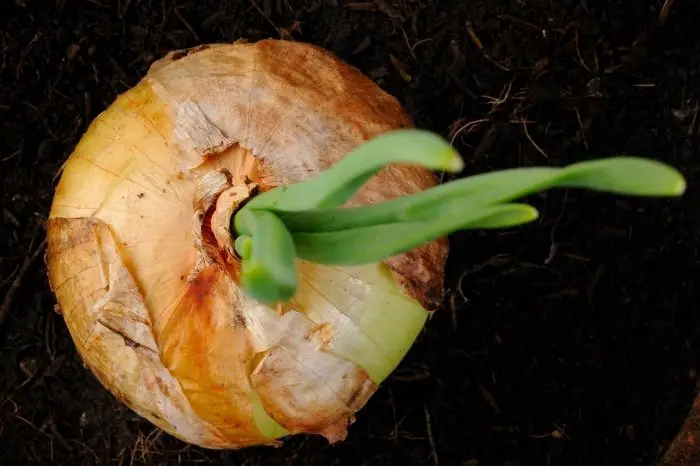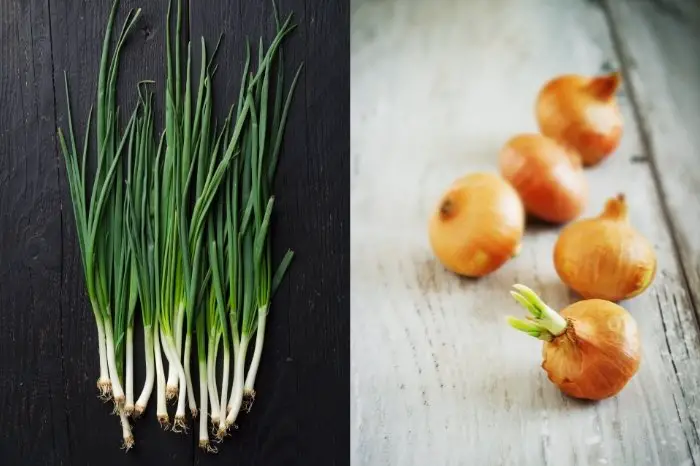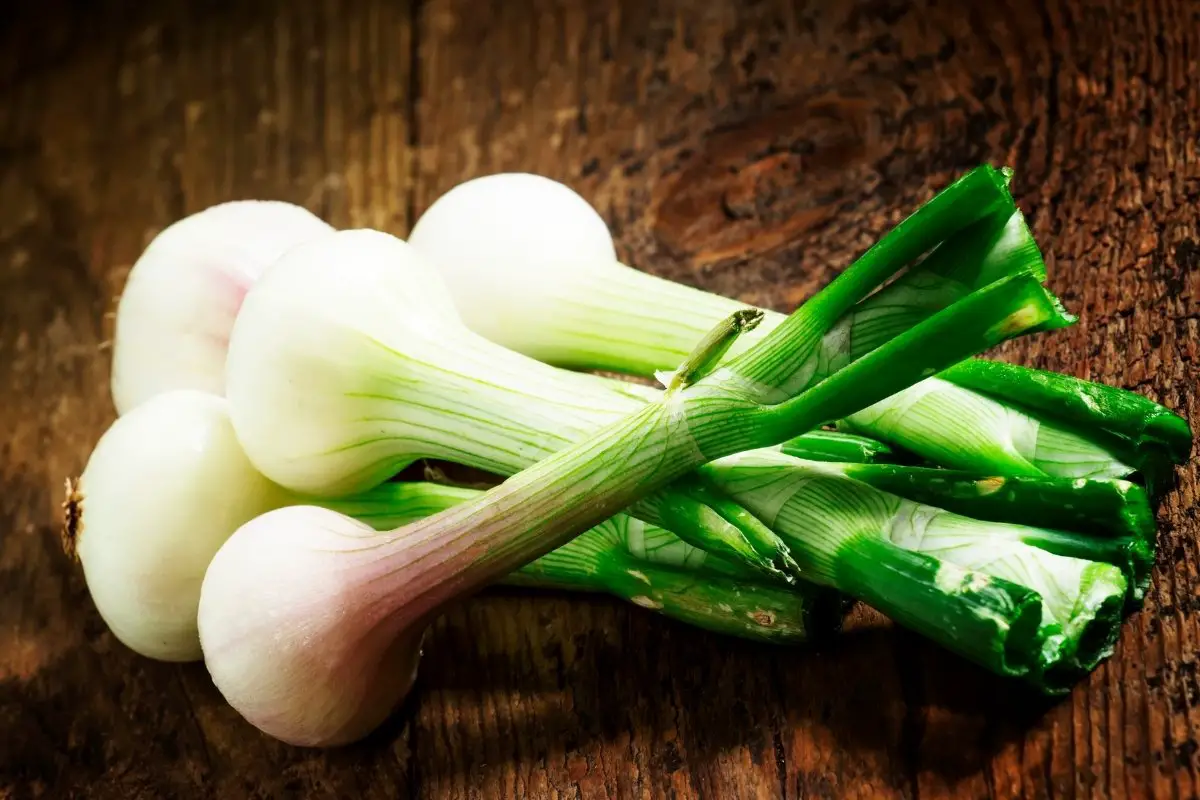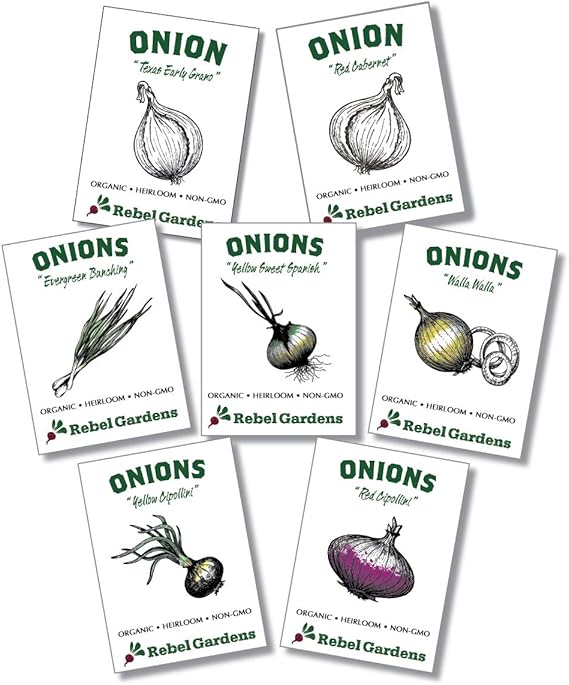Last Updated on March 27, 2022 by Fabiola L.
Have you come across an onion with stem and wondered what to do with it? Onions can develop stems that are edible and, in fact, very delicious. They come with a milder onion taste and bright green color.
Onions are bulbs, just like many flowers. The center of the bulb has stems that shoot off when the conditions are right. A sprouted onion or onion with stem is not rotten. You can remove the juicy white layers to reveal the stems and plant them in your garden. Or you can just chop it into your meal.
Some types of onions are grown to have long green stems and miniature to no bulbs. If this seems too confusing, read on to clear up your onion doubts.
Onion Stem Type
Onion is not a root, but it’s not a stem either. The root of the onion is a bulb or a modified, underground stem. The underground stem is surrounded by fleshy, juicy scales, forming a tunicate bulb. The scales grow in concentric circles forming the protective layer. Small roots grow under the bulb and help anchor it better.
This modified stem acts as a storage space for the plant. The tiny roots absorb nutrients from the ground and store them in the bulb. This bulb, like many others, is both edible and can be used as a seed. You can plant an onion bulb in the ground even if it doesn’t have a showing stem.

Why Do Onions Develop Stems
Onions are storage bulbs that are capable of regrowing. If you have a larger quantity of onions, some might start developing stems before you use them.
The modified bulb of the onion goes dormitory in cool, dry, and dark places. We often keep the onions in a light and warm spot that disturbs their dormitory period and stimulates them to regrow.
Storing them with other fruits and vegetables that release ethylene gas contributes to speeding up this process. It’s likely to see an onion with stem if you keep it in the same drawer with tomatoes and bananas.
Since the onion already has small stems inside the bulb, the offshoots appear in a few days. So, how to cut an onion with the stem attached? Just like you would regularly! The onion with stem is edible and there’s no need to throw it away. But beware that sprouted onion rots fast and can become mushy.
Check Out Garden Sand: Recreate The Japanese Gardens In 6 Steps
Sprouted Onion Vs Spring Onion
The most common confusion: is an onion with stem the same as spring onions? Spring onions are a completely different kind. They’re planted from seed in fall and harvested in spring, hence their name. They develop small white or red bulbs and long green stems. They pack an intense onion flavor.

Can you eat the stem of green onion? You can and you should! Scallions or green onions are the offshoots of a spouted onion, harvested while they’re young. As a result, they have a milder onion flavor, vitamins, minerals, and many more health benefits.
Wondering what to do with green onion stem? You can use the whole plant, including the bulb, just like a regular onion, fresh or cooked.
Click Here to Get A Guide On The Boston Fern Runners
What To Do With Onion Stems
If you feel weird about eating onion with stem, you can do many other things to use it up! Of course, it’s perfectly safe to eat, but you can regrow some and diversify your garden. Here are our top suggestions.
Plant Sprouted Onion
Take your onion bulb and peel the brown layer like you would before cooking it. Then carefully cut each layer until you reach the small bulbs with stems inside. You can easily cut the bulbs, so it’s best to do this layer by layer.
Organic Onion Seeds – 7 Varieties of Heirloom and Non-GMO
Take the sprouting, and use up the rest of the onion. Place the stem in a pot with soil and water it regularly. Use your kitchen window to place the pot, as the onion needs plenty of sunlight. You can cut the green stems whenever you need them or harvest the bulb as soon as it appears above the soil.
Read more about What To Do With Aloe Vera Flower
Chop the Stems in A Salad
If your onion with stem has already grown too much, you can cut the stems and use them in a salad, omelets, or other dishes. They have a milder onion flavor but are rich in protein.
If you want to keep the stems fresh, place the onion in a cup with water touching the hir-like roots but not the bulb. This way, the stems will stay crispy longer.
Use It to Deter Deer
Having a hard time keeping deer away from your vegetable garden? That onion with stem you have lying around can help you! Plant it as we instructed above but place it in the ground near your fence or spot where deer tend to enter your garden.
The pungent smell repels the deer without hurting them.
Bottom Line: Is Onion with Stem Edible?
When kept in a warm spot with plenty of sunlight, onions can start to sprout. If you notice an onion with stem don’t throw it out! Onions are modified stems with a tunicate bulb that can be regrown. If it’s too much of a hassle, you can eat it like it is; the stem is completely safe.
Plant the onion with stem and add a spicy flavor to your meals. As the stems grow, you’ll have fresh green onions all the time.
FAQ’s
How to cut an onion with the stem attached?
If you want to regrow the onion, start by peeling the brown skin, and then remove the layers until you reach the tiny bulbs in the center.
To use it in cooking, cut the onion together with the stem, if the stem is green and fresh. The stem has a milder onion flavor.
What to do with green onion stem?
Use the fresh, crispy green onion stem in salads or cooking. They're safe to eat, rich in protein, vitamin K, vitamin C folate, and fiber. They don't have as pronounced onion flavor, so even non-onion lovers might like them.
Can you eat the stem of a green onion?
The stems of green onions are safe to consume and tasty. They don't have the exact onion flavor and might be slightly bitter. But they're full of healthy benefits, so try them yourself!
Learn more about Is Onion A Root Vegetable? Find Out The Amazing Answer About Onion Plant Type
Mary is a passionate gardener who loves spending her days getting her hands dirty and nurturing her plants. She‘s an avid reader of gardening magazines and is always looking for new ways to make her garden thrive. When not outside tending to her plants, Mary can be found inside reading up on the latest gardening trends, comparing notes with fellow gardeners, and finding the perfect pottery planter for her next planting project.



